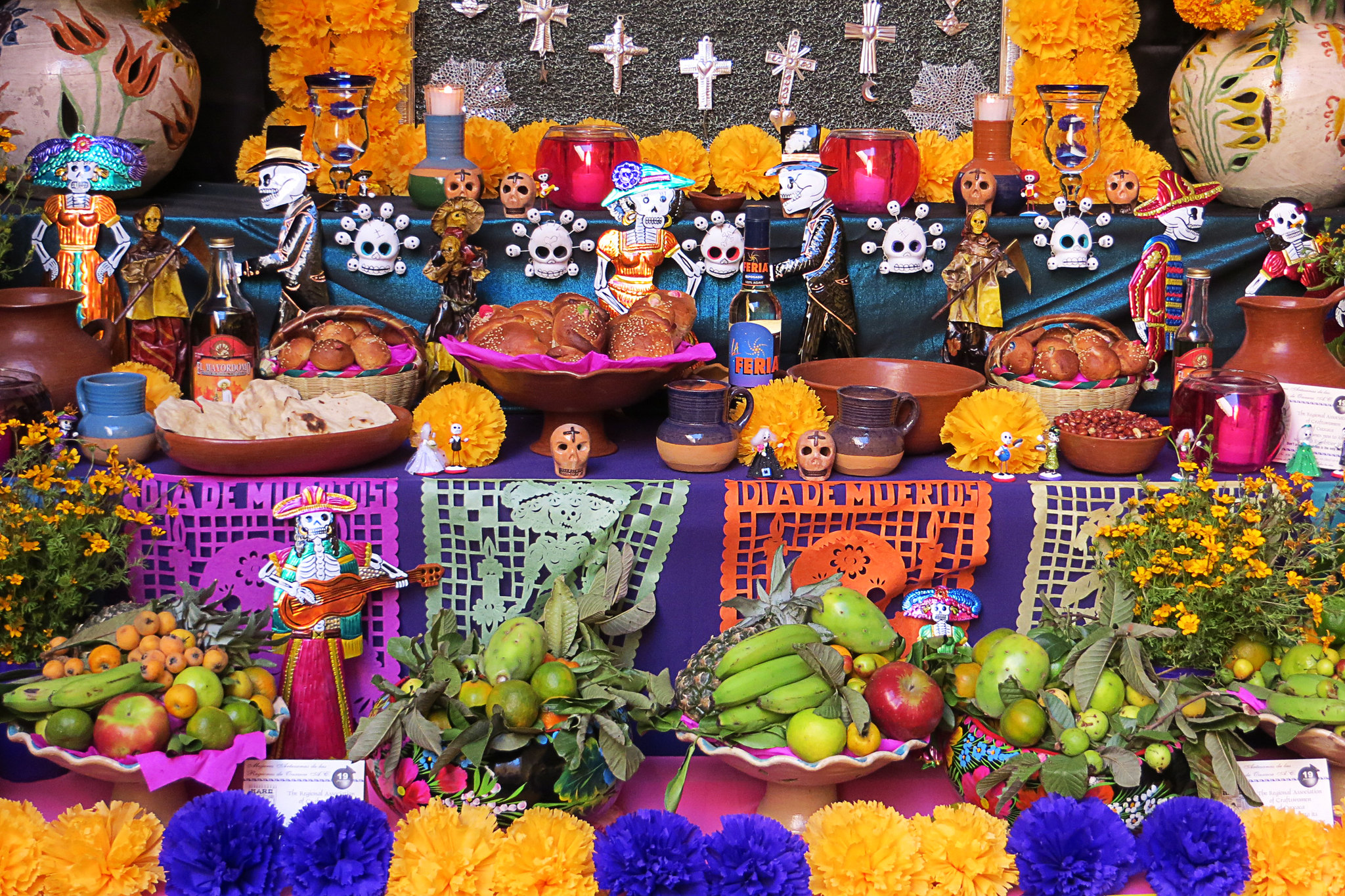
While Mexico City holds several events to commemorate the traditions and icons of Dia de los Muertos, the greatest immersion can be found in Mixquic. We suggest planning at least 1 year in advance. Take a read through our suggested itinerary to get a feel of what your Day of the Dead in Oaxaca could be.

Travel with Journey Mexico and we’ll craft a fully personalized itinerary to let you experience Day of the Dead on your owns terms without the hassle of traveling with a group. Arcs of bright cempasuchils provide a welcome to spirits who are crossing over. For visitors, Oaxaca has elaborate Day of the Dead altars set up throughout the town and sand tapestry competitions. With this, families can buy what they need to create their colorful and vibrant altars in their homes. The week traditionally starts with “Plaza de los Muertos” commencement where the marketplaces start to sell everything related to Dia de los Muertos traditions: pan de muerto, calaveras, papel picado, cempasuchils, incense, and so forth. Oaxaca transforms during Dia de los Muertos as the city prepares to welcome their loved ones spirits back to earth. Costumes, body paint, and imagery of skulls and bones are often important in many areas of Mexico when celebrating these holidays as well. The favorite food and beverage of the deceased are often taken to graves and alters to honor the dead and in some regions, people celebrate the loss of children by hosting dinners consisting of specific foods and sweets. In some areas, the cemetery plays a larger role in celebrations than in others where the home is the center of celebrations where altars and ofrendas are built. It is important to note that the celebrations for these holidays vary widely throughout the different regions of Mexico. Another tradition involves reciting short poems called calaveritas (little skulls), which are mockingly funny verses poking at the quirky habits or comical events of the deceased and their past. One of Mexico’s most prominent symbols of Dia de los Muertos are the Catrina figures (little statues of skeletons dressed in formal clothing) which originated as a parody poking fun at upper class Mexican females. The mood of these holidays will vary from grievance to humorous as relatives reminisce about funny events and anecdotes of their loved ones.

It is believed that on these days, the souls of the deceased return to earth to be with their families and loved ones. November 1st is traditionally referred to as Dia de los Angelitos (Day of the Little Angels) in Mexico and is the day to honor infants and children who have died followed by November 2nd, the actual Dia de los Muertos, when families tribute adults whom they have lost. It originated from a centuries-old Aztec festival in honor of Mictecacihuatl, a goddess known as the Lady of the Dead. Since it follows Halloween, some people might conclude that it is the same holiday or an evil holiday praising death, but that couldn’t be farther from the truth. Day of the Dead, or Dia de los Muertos, is an often misunderstood holiday celebrated in Mexico.


 0 kommentar(er)
0 kommentar(er)
